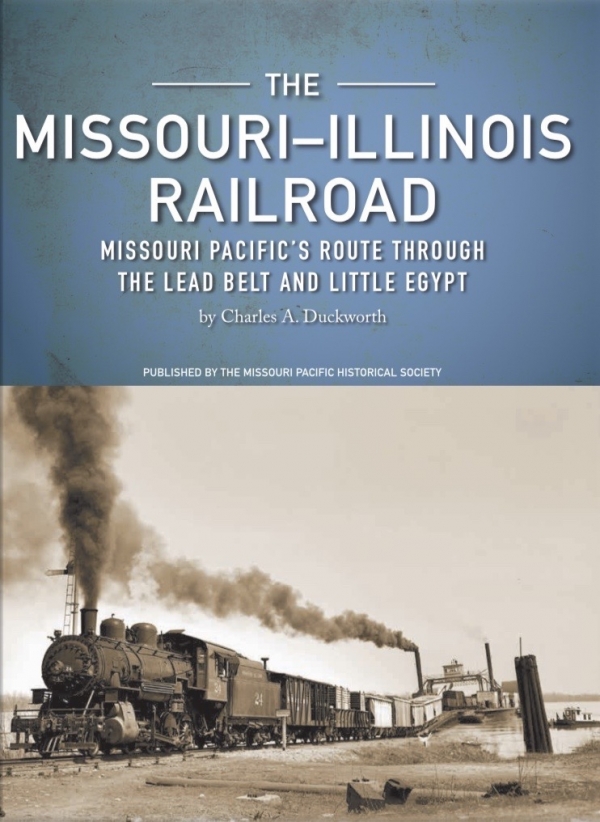All about the community of model railroading and rail enthusiasm
October 20, 2020 / Updated July 25, 2023
The Missouri Pacific Historical Society pays tribute to a unique short line with the September release of Missouri-Illinois Railroad: Missouri Pacific’s Route through the Lead Belt and Little Egypt, a 376-page hardback that traces the railroad’s colorful past.
The Missouri-Illinois operated 146 miles of track, connected by the Mississippi River, in Missouri and Illinois. It ran through the “Lead Belt” in Southeast Missouri, which contained the largest concentration of lead deposits in the world. The land between the Mississippi and Ohio rivers in Illinois was thought to resemble Egypt’s Nile Delta and became known as Little Egypt in the early 1800s. A city in the region was named Cairo.
The M-I was unique because one of its predecessor roads was built as a three-foot narrow-gauge line, which was unusual in the Midwest. Also, the M-I operated a car ferry across the Missouri River for five decades, and it had the only switchback between the Allegheny and Rocky mountains.
Like many short lines, the M-I depended on second-hand locomotives and rolling stock.
The railroad’s roots trace to the narrow-gauge St. Joseph and Deslodge Railway, which operated on 13 miles of main line from Bonne Terre to Summit, MO. Over the years, several other railroads, including the Mississippi River & Bonne Terre Railway, would lay tracks that eventually became part of the M-I network.
The M-I emerged in 1921 after the Illinois Southern ceased operations in 1919. Large IS shippers who depended on rail transportation bought the property for $900,000 and formed the M-I on the condition that it operate for 10 years.
The railroad was incorporated in January 1921 and operated independently but by the Great Depression in 1929 was swimming in red ink. Missouri Pacific acquired controlling interest about that time and leveraged oil wells that were drilled near the main line in Selma, IL, to provide a critical source of revenue that helped the M-I operate at a profit over the next few years.
The M-I merged into the Missouri Pacific system Nov. 2, 1978.
The book, written by Charles A. Duckworth and published by Donning Co. Publishers (Brookfield, MO), looks at stations along the M-I route as well as locomotives, rolling stock, freight and passenger service, railyards and accidents.
With color and black and white photographs and an extensive bibliography, the book showcases a range of operations information and includes a partial list of customers in Missouri and Illinois. Missouri-Illinois Railroad also honors many of the railroad’s employees, some of whom gave testimonials about life on the railroad.
Proceeds support the Missouri Pacific Historical Society. For information, email MIBook@mopac.org .
